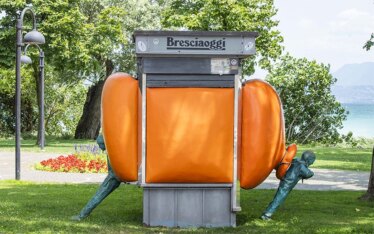Cristina de Middel and Maria Callas: biographical notes

CRISTINA DE MIDDEL is a Spanish photographer whose work investigates photography’s ambiguous relationship to truth. Blending documentary and conceptual photographic practices, she plays with reconstructions and symbology to blur the border between reality and fiction while addressing contemporary issues. After a 10-year career as a photojournalist, de Middel stepped outside of the traditional gaze and produced the critically acclaimed series The Afronauts in 2012, which explored the history of a failed space program in Zambia in the 1960s through staged reenactments of obscure narratives.
Since 2012 de Middel has been continuously producing new bodies of work that question how photography can contribute to the full understanding of our multi-layered and complex world. Mixing fiction with straight documentary practices and inserting her narrative in the traditional tools of mass communication, her work brings more questions than answers to build up a critical sense in the audience.
With more than 13 books published, Cristina de Middel has exhibited extensively internationally and has received numerous recognitions for her work including the Infinity Award from the ICP in New York and being a finalist of the Deutsche Börse Prize in 2012. She also received the Spanish National Award in Photography in 2017 and more recently the Prix Virginia.
Cristina de Middel is a member of Magnum Photos and lives and works between Mexico and Brazil.

MARIA CALLAS, original name Maria Anna Cecilia Sofia Kalos, was born in New York to Greek parents on 2nd December 1923. After separating from her husband, Maria’s mother took her to Greece where she received a very strict upbringing. She was made to study at the Athens Music Conservatory from a very young age in order to exploit her extraordinary vocal talents and was effectively deprived of her youth.
After briefly returning to New York in search of fortune, she reached Italy in 1947 and began her singing career at the Arena in Verona, where she met her future husband Giovanni Battista Meneghini. It was not long before the talented young star became one of the greatest opera singers on the international scene. In the 1950s Maria Callas performed in all the major Italian theatres, from La Fenice in Venice to La Scala in Milan, and went on to tour and appear in the most important theatres in Europe and the USA. Throughout her career as a soprano she interpreted tragic heroines in the main operas at the centre of the revival of the Italian repertoire in the first half of the 19th century, with her distinctive vocal tone, remarkable range and agility, great musicality and dramatic flair.
Her artistic success, combined with the media exposure caused by her relationships and rivalry with other celebrities, made her legendary and earned her the title of “La Divina”. Thanks to her undisputed talent and connections with the major authors and directors of the time, she played prestigious roles alongside, among others, Pasolini, Visconti and Zeffirelli. She fell into decline from the 1960s onwards due to drastic weight loss, health problems, the death of her infant son and the disappointment following her affair with Aristotle Onassis.
Maria Callas died alone in Paris in 1977 of a cardiac arrest and due to her already failing health. As she had expressly requested, her ashes were scattered in the Aegean Sea.








